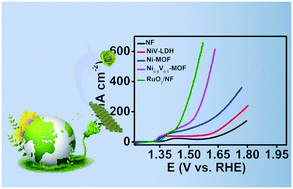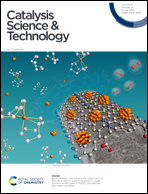In situ conversion of layered double hydroxide arrays into nanoflowers of NixV1−x-MOF as a highly efficient and stable electrocatalyst for the oxygen evolution reaction†
Abstract
Through the transformation from layered double hydroxides (LDHs) to metal organic frameworks (MOFs) by a hydrothermal method, we have prepared a promising electrocatalyst (NixV1−x-MOF) for the oxygen evolution reaction (OER). The optimized Ni0.9V0.1-MOF has the best OER performance and only requires an overpotential of 290 mV to drive a current density of 150 mA cm−2 in alkaline solution.



 Please wait while we load your content...
Please wait while we load your content...